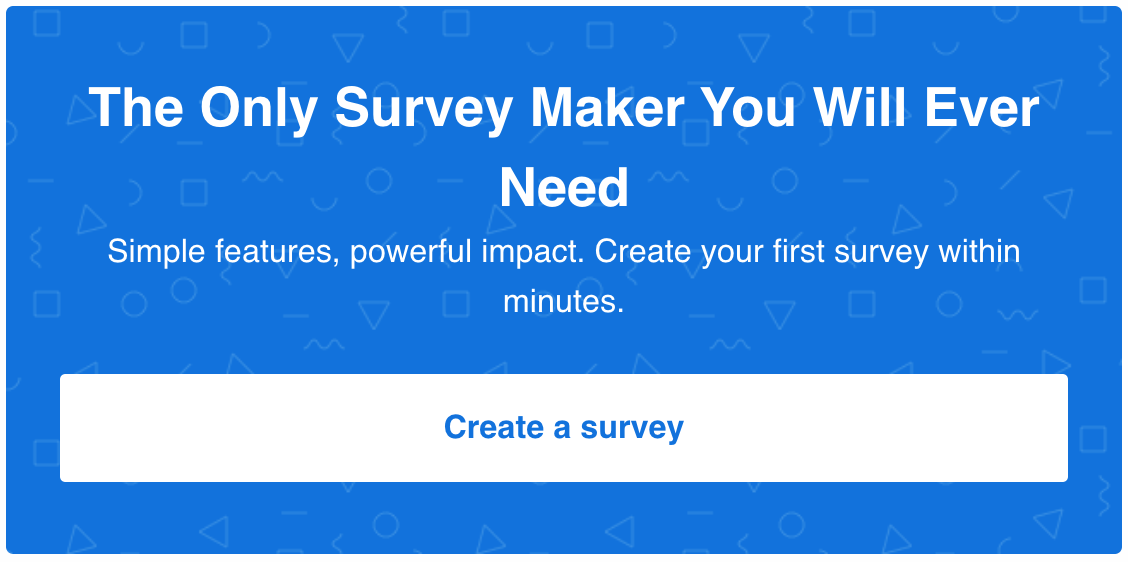Once you’ve come up with your big business idea, you should rush into realization and invest all your time, effort and money into it, right? Not really.
If you want to get it right and save yourself a lot of time and money, you should consider concept testing your idea before putting it out on the market.
What is Concept Testing?
In simple terms, concept testing means checking the pulse of your potential customers in order to anticipate their reactions to your new product or service (idea) before introducing it to the market.
Whenever a company or organization is looking to launch a new product or start developing a new idea, it’s essential to do proper concept testing for two main reasons – (1) to identify the perceptions, needs, and preferences of their target audience in relation to your product or service and (2) to validate your business idea.

According to McKinsey, only 50% of product launches eventually meet their business goals. One of the possible reasons why half of the new product launches fail could be in the fact that they don’t do proper concept testing.
In what Bill Gates described as one of his favorite case studies, Ford invested $250 million in the Ford Edsel, the vehicle they pompously dubbed “the car of the future” back in 1957. But instead of revolutionizing the industry, their new product became a historic flop and led the company to lose $350 million while the Edsel case study became a textbook example of how not to develop and market new products.
What was their greatest mistake? Not doing proper concept testing.
Even though they conducted consumer polls, Ford’s executives failed to implement any of the feedback they got and only pretended to be acting on what the polls said.
Here’s why you shouldn’t repeat the mistakes Ford had made.
Why You Need to Do Concept Testing Now
To further develop your original idea. Often it might seem to you that you’ve finally come up with that “killer” idea, but suddenly, you get stuck and don’t know which direction to take next. Running a concept test might just help you expand your initial idea and point you in the right direction.
To estimate the market potential of your concept. The fact that you think your concept is awesome doesn’t have to mean it really is (it’s hard to be objective when it’s something you’ve invested a lot of your time and effort into). Okay, you’ve done some concept testing and it seems many of your potential customers like it too.
Does this mean it’ll be a business success? Not necessarily. You still need to make sure enough people are willing to buy it at a price that enables you to cover the costs of production and reap some profits. You surely wouldn’t want to overinvest in a product or service that can’t carry the weight.
To reduce the risk of making a poor investment. Sure, performing concept tests is important for further developing your good ideas and estimating their market potential. Equally importantly, concept testing enables you to eliminate lower-potential ideas and reduce the risk of wasting your money.
To learn more about your potential customer base. Concept testing is essential if you’re looking to learn more about your potential and current customers and identify different customer segments. Knowing who likes your concept the most and why could help ensure your product launch is a success.
To determine the post-launch marketing plan. Once you’ve launched your product or service, you need to keep the wheels of your marketing efforts going in order to ensure you’re closing enough sales to keep the business profitable. The findings from your concept testing survey could help you decide on which post-launch steps to take.
How to Create a Quality Concept Testing Survey
1. Decide on the survey methodology
Before you start creating your own concept testing survey, you need to decide which methodology will best serve your purpose and help you achieve your goals. There are 4 most common concept testing survey methodologies:
1. Monadic (Single Concept Evaluation)
In this type of survey, respondents fully evaluate only one concept.
2. Sequential Monadic (Multiple Concept Evaluation)
Unlike monadic methodology which presumes single concept evaluation, sequential monadic concept testing means that the respondents fully evaluate several different concepts.
3. Comparative (Concept Selection)
Comparative survey methodology means that the respondents choose which concept they like best out of the choices given.
4. Comparative Monadic (Concept Selection and Evaluation)
The comparative monadic methodology represents a combination of the first and third option – respondents first choose which concept they like best and then they fully evaluate just that one concept.
2. Write quality concept testing questions
The fact is that any survey is as good as its questions (concept testing surveys being no exception here). So, how can you make sure your concept testing questions are purposeful and on point? Here are some tips.
- Use Likert scale questions. To make gathering and processing of the results as simple as possible, I recommend you use Likert scale type of questions. Those are closed-ended questions with usually 5 or 7 answer options ranging from one extreme to another (for example, from “extremely satisfied” to “not satisfied at all”). Here’s everything you need to know about Likert scale surveys.
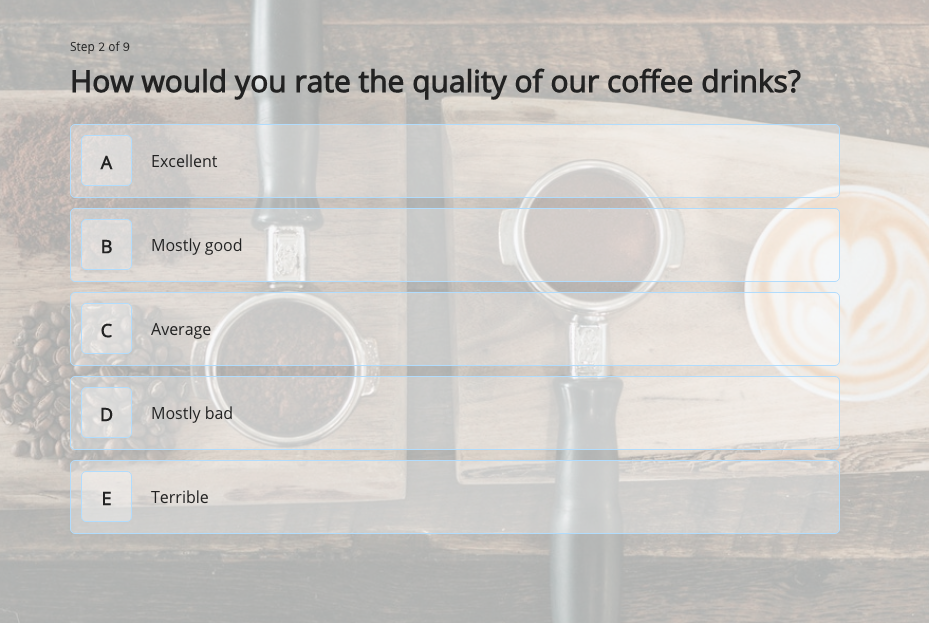
- Be precise, specific, and focus on one topic. In order to get as accurate survey results as possible, you should be as precise as possible when phrasing your questions and answers. Avoid using vague words or expressions. When it comes to rating scales, you need to do your best to make deciding on the gradation of answers a no-brainer for the questionnaire takers.
- Avoid biased answers. Any survey-based research is only valuable if its results are valid. This is particularly true when it comes to concept testing as the success of your next business endeavor pretty much relies on it. That being said, you need to do everything in your power to avoid bias in your research. To help you, I’ve identified 4 most common types of bias in research and provided tips on how to avoid them.
- Determine the ideal number of concept testing questions. From our own experience with surveys, you’d rarely (or almost never) want your surveys to contain more than 30 questions as you don’t want to overburden your respondents. Depending on your specific needs and testing goals, anywhere in the range of 10-20 could be optimal.
If you need additional help writing your survey questions, here are some tips on how to write amazing questions and what types of survey questions to choose depending on your specific needs.
3. Create an interactive and appealing concept testing survey
Using the right tool, you can create all kinds of surveys in less than an hour (including the concept testing surveys). You can choose from a variety of options including closed-ended and open-ended questions, images, videos, lead forms, and so on. But let’s go step-by-step.
Step #1 – Go to LeadQuizzes.com and log in to your account
Just enter your LeadQuizzes username and password and you’re ready to start creating a survey. If you don’t have an account yet, you can sign up for a FREE trial right now.
Step #2 – Click on Create New Content
From your LeadQuizzes dashboard, click on “Create New Content”.
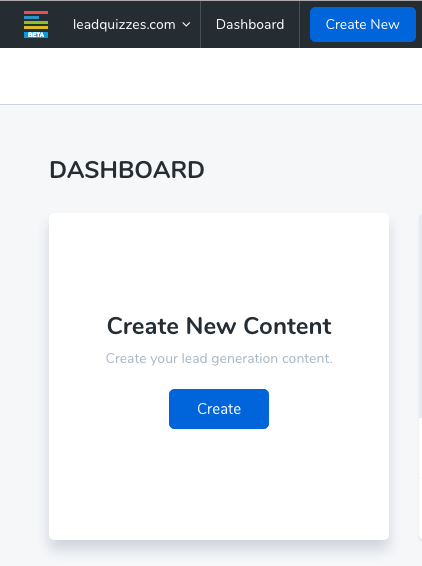
After that, you’ll be prompted to set the content name. Just write your desired name and hit “Save”.
Step #3 – Drag & drop Content Builder elements to create your concept testing survey
Here you can add different elements to different sections of your survey. By simply dragging and dropping the elements on the left, you can customize the basic look of your Start Screen (by including a Cover Page), different Content Elements (such as Text Questions, Image Questions, Form Fields, and so on), and the Results page.
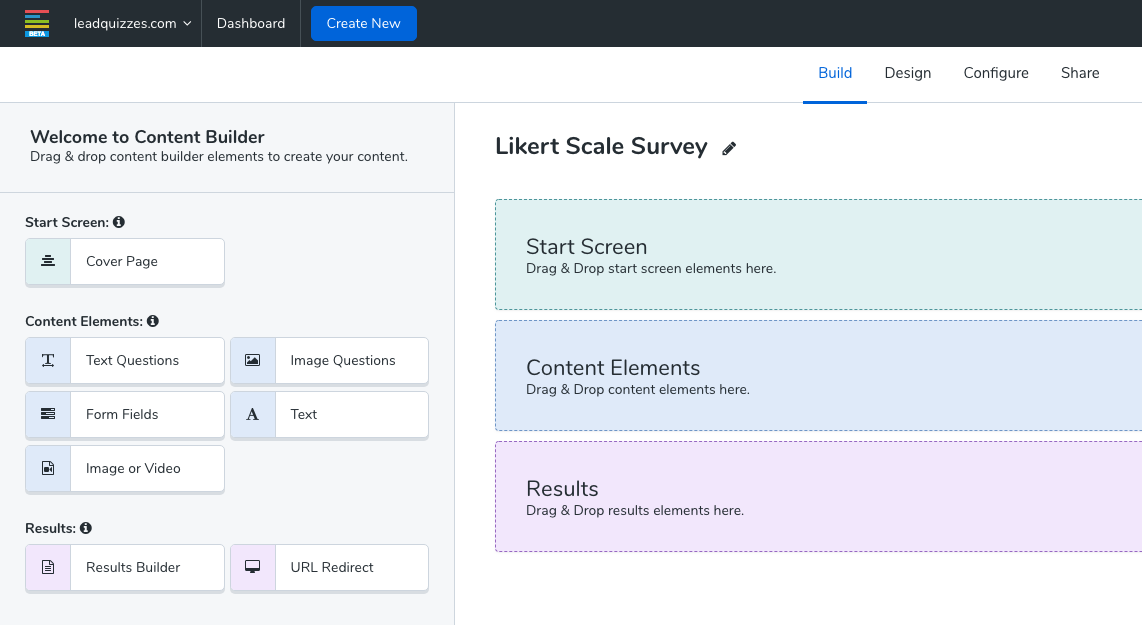
Step #4 – Write your concept testing survey questions and answer options
Here you can choose to include text questions, image questions, form fields, and so on. I’ve already given you some tips on how to write quality questions above, so here you just need to type in your questions.
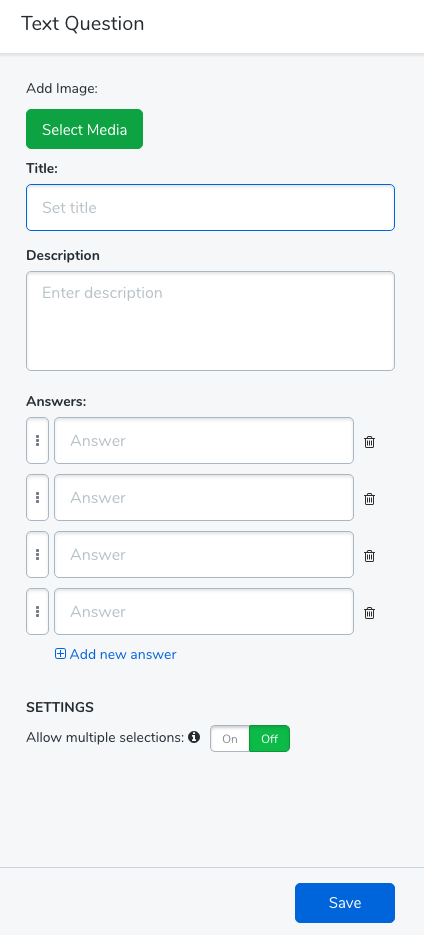
Step #5 – Create the Survey Results Page
Whether you decide to create a simple ‘Thank You’ page or announce your new product to your customers and present them with a special offer, this is the place to do it. You can segment the offers based on the answers your respondents have provided.
Step #6 – Customize your survey design
If you navigate to the Design tab, you’ll be able to customize the look and feel of your survey. Here you can customize the text (choose the font family and color), adjust the color (of background, button, border, button text), or upload the background image and adjust its opacity.
Step #7 – Set sharing options for your survey
If you want people to fill out your concept testing survey, you need to get it in front of them. The best way to do it is by using a unique URL which you can copy or share on various social media networks or by embedding it on your own website.
Step #8 – Publish
Just hit the “Publish” button and you’re ready to do some concept testing with your highly-customized survey.
Why don’t you create your own survey right now? Just click on the image below and try doing it for free!
